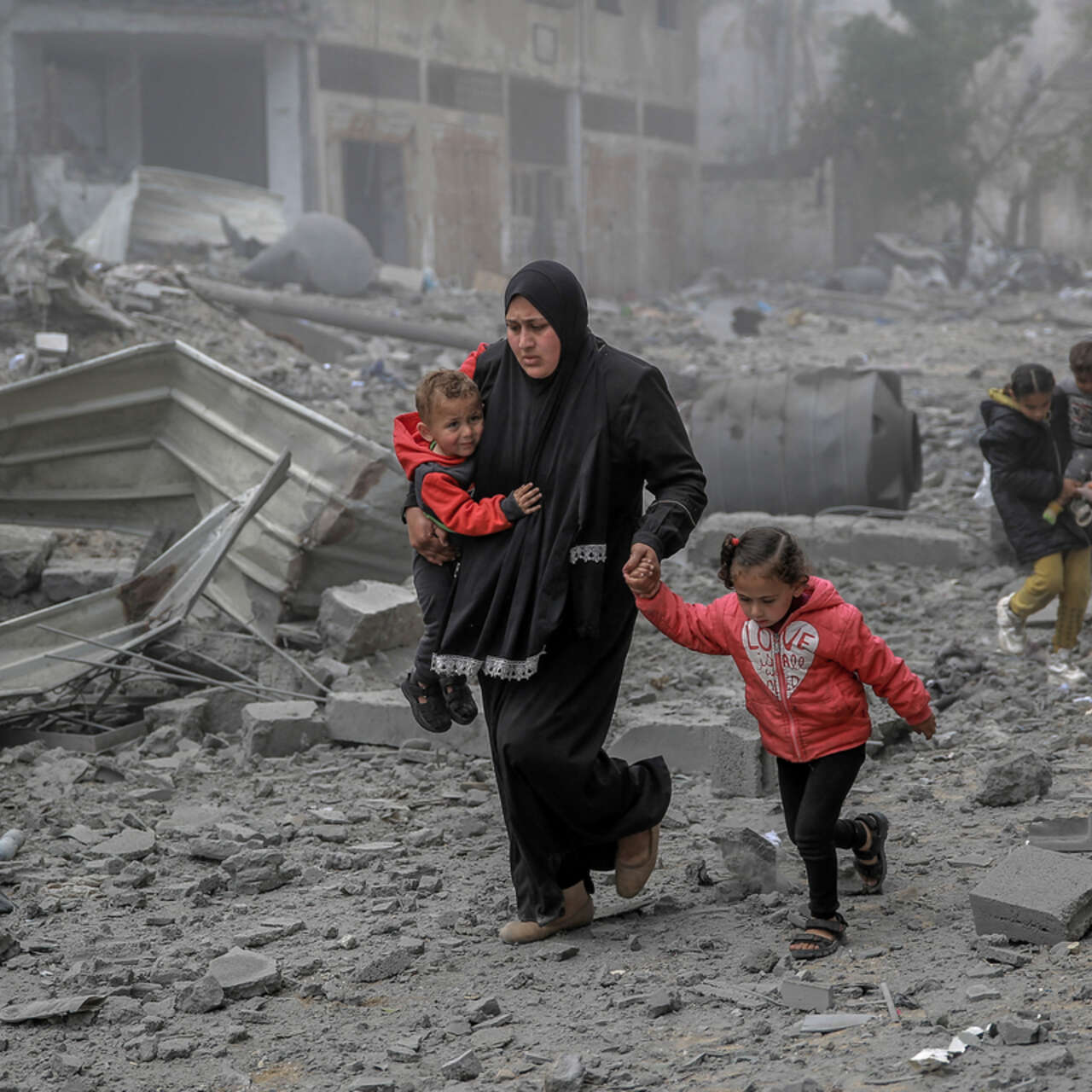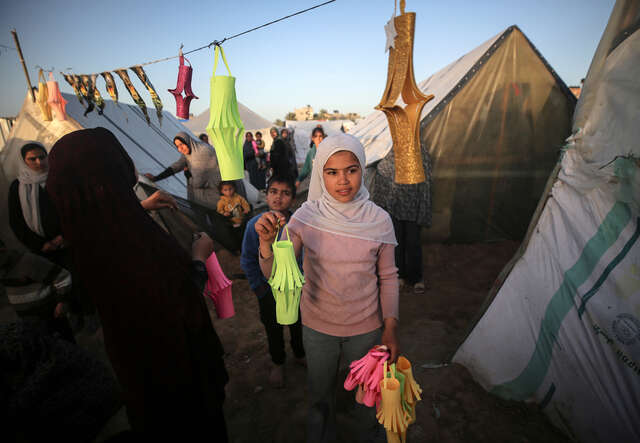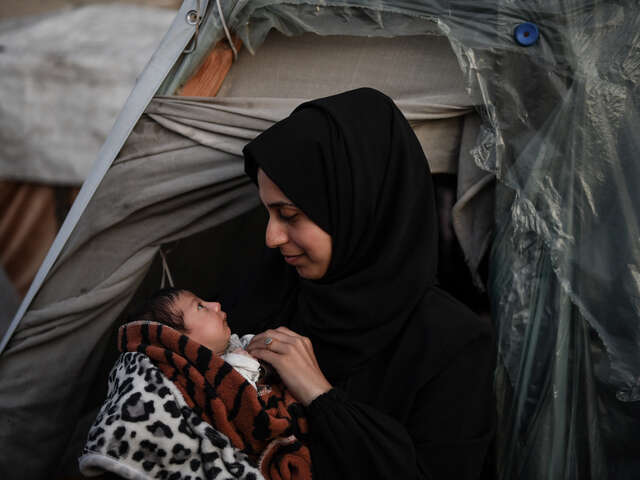
What is happening to children and pregnant mothers in Gaza?
Right now, nearly every person in Gaza is in need of humanitarian assistance. But children are bearing the brunt of the war that’s endured for over a year.

Right now, nearly every person in Gaza is in need of humanitarian assistance. But children are bearing the brunt of the war that’s endured for over a year.
Right now, every person in Gaza is in need of humanitarian assistance. But children are bearing the brunt of the deadly war.
Over 42,000 Palestinians have been killed and tens of thousands more are missing, according to Gaza’s Ministry of Health. The United Nations and humanitarian actors have reported children dying from starvation and disease, and suffering life-changing injuries.
Meanwhile, pregnant women and mothers are struggling to provide for and protect themselves and their babies. Read on to learn more about the situation and how the International Rescue Committee is supporting people.
An estimated 8,000 of identified fatalities in Gaza are children and thousands more are missing, according to the Ministry of Health. Tens of thousands more have been left alone or separated from their families.
An entire generation of children is now at risk of being ‘forgotten’—with the cumulative effects of unrelenting violence, forced displacement and loss of an entire school year likely to impact them for the rest of their lives.
Among the most vulnerable are children who have been separated from their families or who are left without adults to care for them. It is estimated that around 17,000 children could be unaccompanied or separated from parents and caregivers. However, the IRC estimates this number may be three times higher, based on other crises.
IRC research has found that the risk of family separation has increased dramatically in the past months, exacerbated by multiple rounds of displacements, arrests, Israeli forced displacement orders and fatalities. Some children have been found living alone in hospitals.
Virtually all households in Gaza are skipping meals daily, with many going full days without food.
The IRC is alarmed by reports that children in Gaza have died from starvation and dehydration. In northern Gaza, one-third of children under the age of three are now malnourished, which makes them more vulnerable to communicable diseases and related health challenges.
Malnutrition is also impacting pregnant and breastfeeding mothers, in addition to making it harder to breastfeed. Among households with breastfeeding mothers, 55% have reported health conditions impeding their ability to breastfeed, and 99 percent face challenges securing enough breastmilk, compromising infant survival, growth, and development.
IRC nutrition technical advisor Assumpta Ndumim, who visited the region to support the response, explains: “One of the reasons for these rates, especially for the younger children—the children under 6 months or between 6 months to 10 months—was that these are the children who were born when the crisis started in October.
“And because parents had to flee, they had to find new shelters, often living in overcrowded conditions where there’s no privacy to continue to breastfeed.”

For those relying on milk powder or formula, soaring inflation rates and a lack of functioning markets have made them increasingly unattainable.
“I spoke with a local partner who mentioned that at one point, for example, a 25-kilogram bag of wheat flour was going for up to 1,000 USD, and that’s if you could find it,” recalls Ndumim.
Meanwhile, persistent Israeli restrictions on the flow of humanitarian aid into and around Gaza are driving a desperate shortage of food, fuel, medicine, equipment and humanitarian staff. Since the Rafah crossing closed in May, aid flows, already at low levels, have plummeted by 78%.
The entire school-aged population in Gaza, 625,000 children, have lost access to education. Almost 90% of all schools have been damaged or destroyed. With so much of the population displaced, the majority of the schools left standing are being used as shelters.
“I wondered, why are there so many children on the streets playing?” Ndumim recalls thinking when she first arrived in the region. “And then I soon discovered that there were no schools open. That’s when it first hit me that, oh my God, this crisis has led to no education systems working.”

Before the recent increase in hostilities, an estimated one million children in Gaza were in need of mental health and psychosocial support. Now, every child in Gaza has experienced profoundly distressing events and trauma, while their parents face their own severe psychological stress.

There are currently no safe places for civilians in Gaza, and children feel the negative impacts most acutely. Children who experience violence and displacement often experience “toxic stress,” which disrupts their brain development and can lead to long-term health challenges. There is an urgent need for support for children through psychosocial activities or safe spaces. Without this, there is a significant risk of long-term developmental impacts, including on brain development.
The situation urgently calls for immediate international support and intervention to mitigate these impacts and support the resilience and recovery of an entire generation of Palestinian children.
Approximately 183 women give birth daily in Gaza, with limited access to midwives, doctors, or postpartum care. Numerous women have delivered without medical assistance, and reports indicate some undergo C-sections without anesthesia. Since October, over 20,000 babies have been born amidst conflict.

Despite the obstacles the IRC faces, we are working in both Gaza and the West Bank to reach Palestinians in need with critical humanitarian aid.
In Gaza, the IRC is delivering clean water, has launched a community-based malnutrition program, and is providing child protection services. With partners, the IRC is providing emergency, life-saving medical care in Gaza’s few remaining operational hospitals, through the deployment of emergency medical teams.
The IRC is also working with partners to deliver; early childhood development, child protection, women’s protection and empowerment, health, nutrition and basic needs and wellbeing.
In the West Bank, IRC is working with partners to bolster the health system, provide child protection services and women’s protection and empowerment programs.
“At the IRC, we have been working with our community facilitators to give children a helping hand by creating safe spaces for expression and communication and providing mental health support services, and we feel how much this support means to children every day, all of whom have profound trauma,” says Faten Abu Mousa, the IRC’s Child Protection Manager in Gaza.
“Engaging children in mental health and psychosocial support activities during crises not only strengthens resilience, but also enables them to rebuild their lives, creating a foundation for healing and hope.”

The IRC is working with partners to deliver critical emergency aid to families in Gaza and conflict zones around the world. Donate now to support our critical work. We are on the frontlines providing critical aid to crisis-affected people in more than 40 countries, including places on the 2024 Emergency Watchlist.
Read more about the top 10 crises the world can’t ignore in 2024 and learn more about the IRC's 2024 Emergency Watchlist.